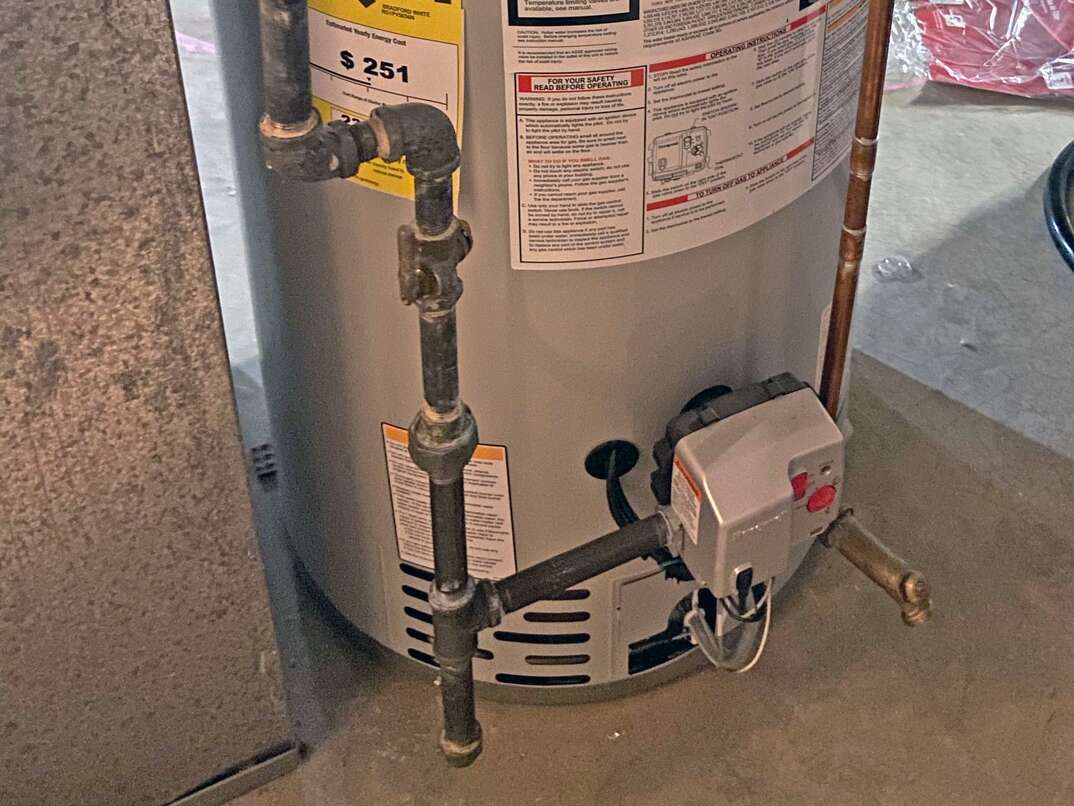Why Does My Water Heater Run Out of Hot Water So Quickly?

It's hard enough to get out of a cold bed on a chilly morning, but the promise of a warm shower (and a hot cup of coffee) can usually be just the lure we need to pull us forward into the day. That is, of course, as long as our water heater is functioning well enough to let us bask in more than just a couple of minutes of steamy bliss before turning into an icy stream of dread.
If you're struggling with a water heater that simply isn't doing its job, read on to find out what you can do to get it back on track.
Check the Basics
There are a few simple things you should check before getting into the more involved reasons why your water heater has become more of a water cooler.
The first is its size. If you have always run out of water in your home after several people have taken a shower, or after a load of laundry has been done, there's a good chance that your unit is simply undersized for your needs. Generally, for one to two people, you'll want a tank size of between 23 and 36 gallons. Two to four people are best served by 36- to 46-gallon units, while three to five would do best with a 46- to 56-gallon water heater. Beyond that, just add 10 gallons per person to figure out the optimal size. You should be able to find the size of your current unit on a sticker on the side.
Another easy thing to check is your water heater's thermostat. This is a dial on the unit that tells it how hot to keep the temperature in the tank. If the thermostat is set too low, then you simply won't be getting the kind of hot water you might be expecting. The best operating range for water heaters is between 122 and 140 degrees Fahrenheit. In fact, any lower than that and harmful bacteria can begin to grow inside the tank. To test the temperature of your hot water, simply use a candy or cooking thermometer placed under the hot water stream at a sink. Adjust accordingly.
If your water heater is electric, it also makes sense to check the circuit breaker that controls it. If it has flipped, getting your hot water back might be as simple as flicking the breaker back on. If it is gas, check to see if the pilot light went out and relight it according to the manufacturer's directions.
Finally, consider your water heater's age. They generally don't last much more than about 10 years, so if your unit is in that ballpark, it simply might need to be retired.
If the size, age and temperature seem good, then it's time to look a bit deeper into the issue.
Sediment
Over time, your water heater can fill with sediment — minerals and other particles that filter out of the water and collect at the bottom of the tank. If a significant amount of sediment collects, it can not only take up room that would otherwise be used by hot water, but it can also block the heating element at the bottom of the tank, keeping it from properly warming the water.
Fortunately, emptying your water heater tank of sediment is an easy task that most homeowners can accomplish on their own. If you're not comfortable doing it yourself, it shouldn't cost too much to have a professional come and help you out.
Dip Tube
Inside your water heater is something known as a dip tube. This tube takes the incoming cold water and directs it to the bottom of the tank, where it is heated. If the dip tube is broken, the cold water can escape along its length and find its way to the top of the tank — and into your shower stream. A sign that the dip tube has broken would be finding small bits of plastic in your plumbing fixtures or when you drain your water heater to check for sediment. Also, water heaters made between 1993 and 1997 are particularly prone to broken dip tubes, so if your heater is from those years, it offers more evidence that your lack of hot water is from this issue. You can replace a faulty dip tube yourself, but it is a slightly more involved process than the other solutions here, so you may want to call a professional to help.
Gas Units
If you have a gas water heater and are suffering from water that's too cool or becomes cold quickly, you will also want to take a look at the flame that powers the unit — the pilot light. If it is not burning a bright blue, then you might have an issue with the gas-to-air ratio. This should be looked at by a professional, as it can lead to a buildup of carbon monoxide. Also, if you find that your pilot light won't stay lit, it is likely an issue with a thermocouple.
Elocal Editorial Content is for educational and entertainment purposes only. Editorial Content should not be used as a substitute for advice from a licensed professional in your state reviewing your issue. Systems, equipment, issues and circumstances vary. Follow the manufacturer's safety precautions. The opinions, beliefs and viewpoints expressed by the eLocal Editorial Team and other third-party content providers do not necessarily reflect the opinions, beliefs and viewpoints of eLocal or its affiliate companies. Use of the Blog is subject to the
Website Terms and Conditions.The eLocal Editorial Team operates independently of eLocal USA's marketing and sales decisions.



